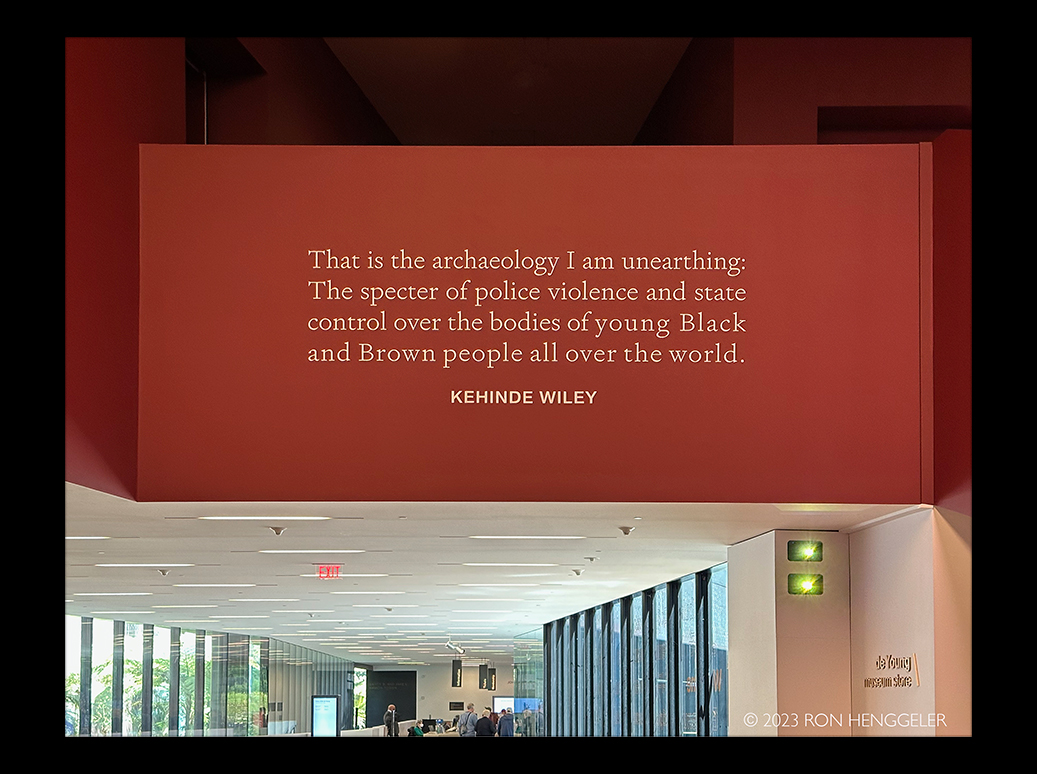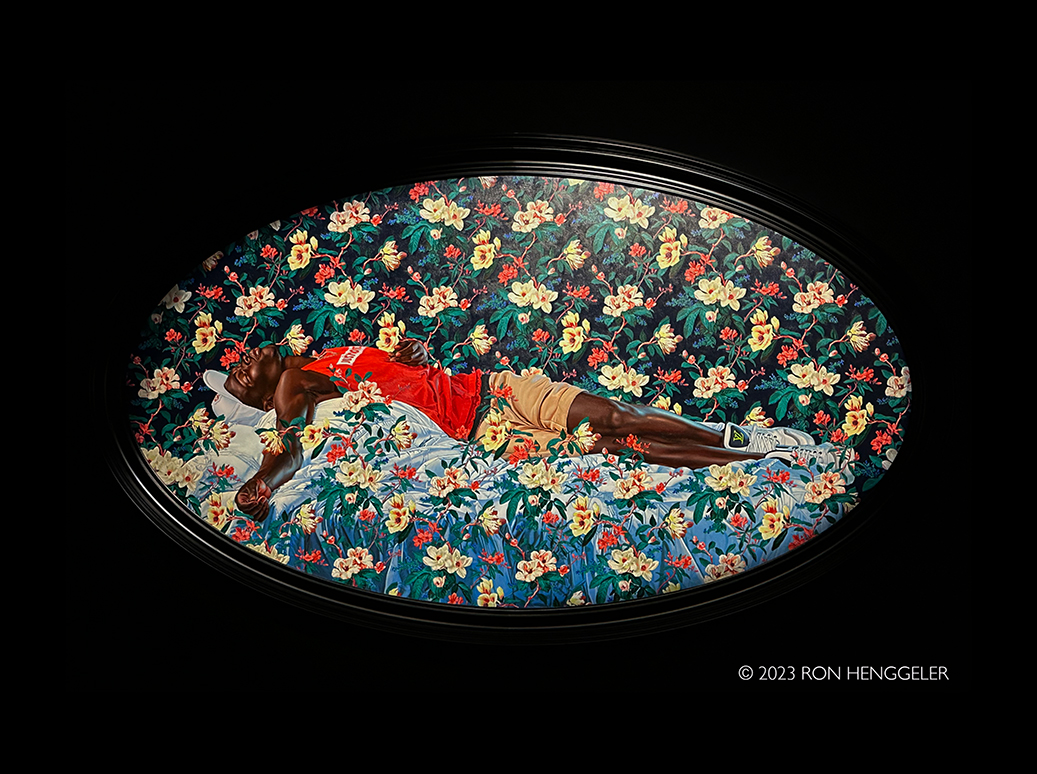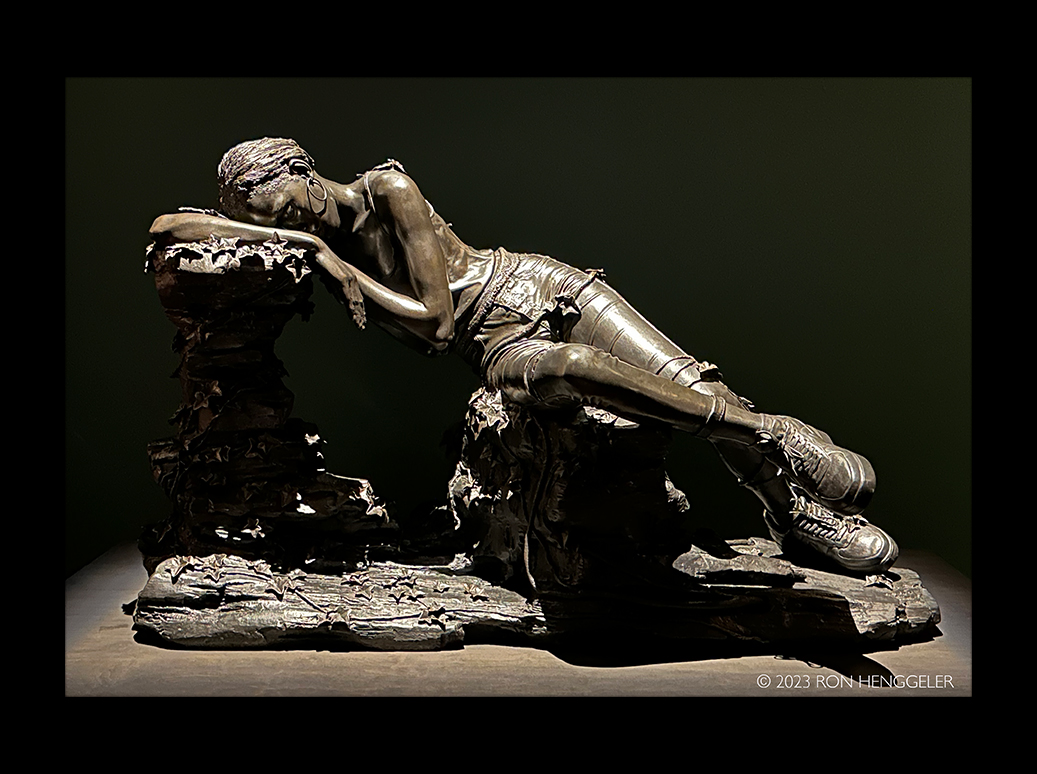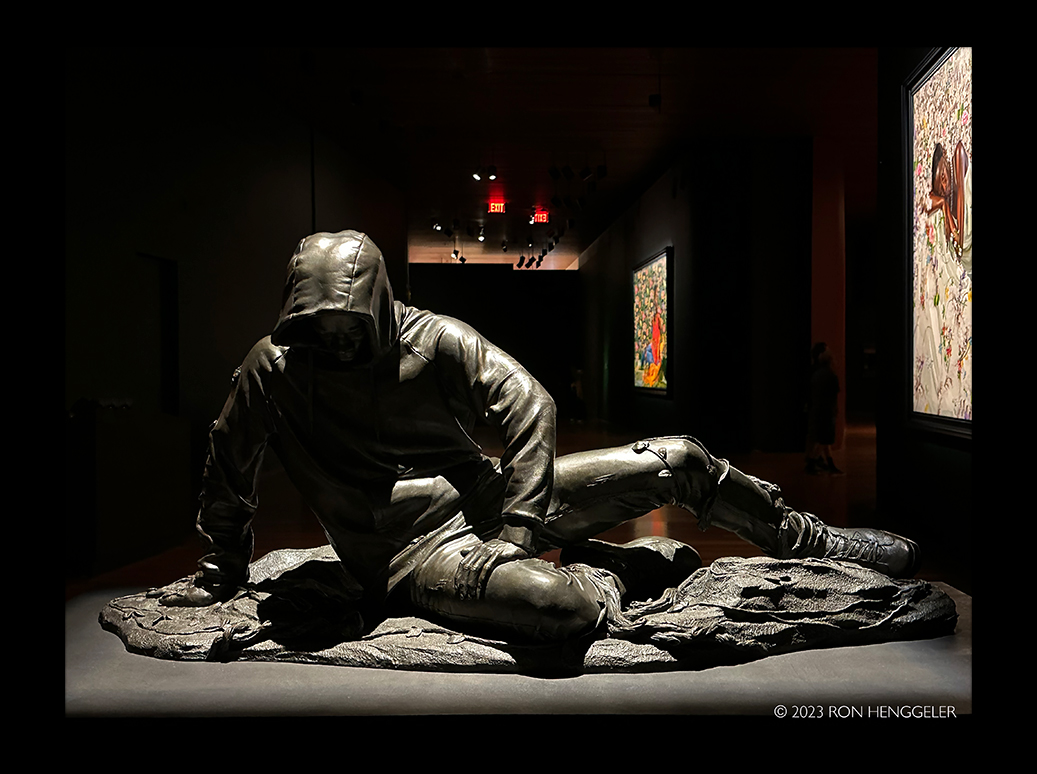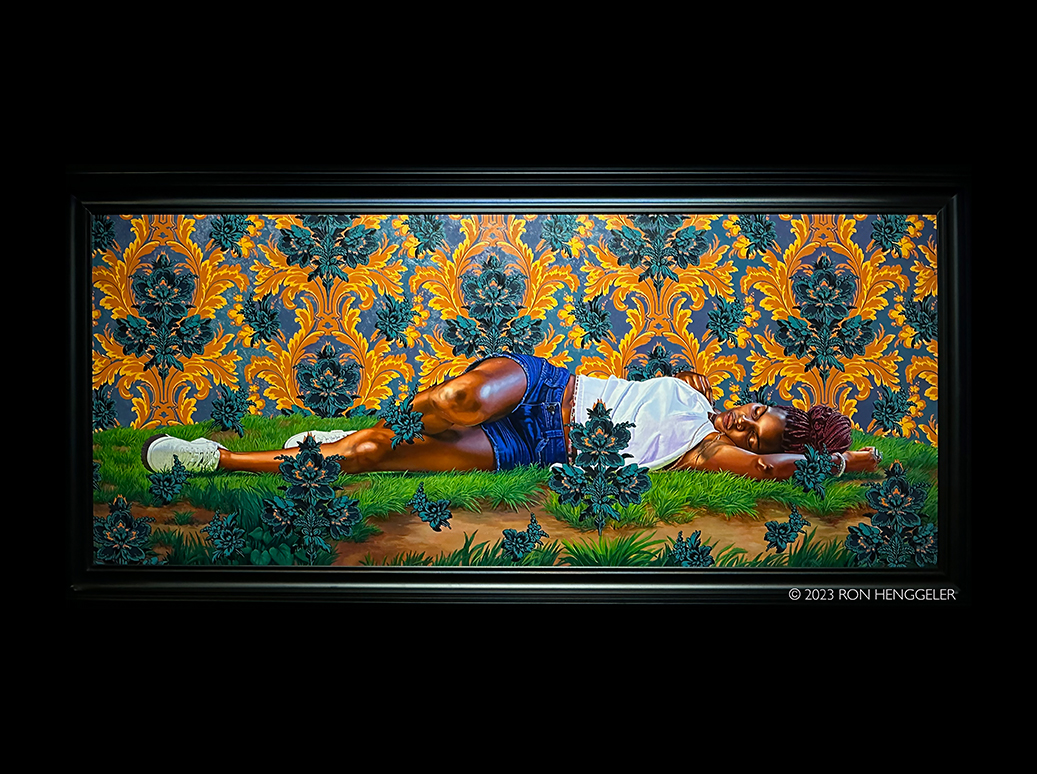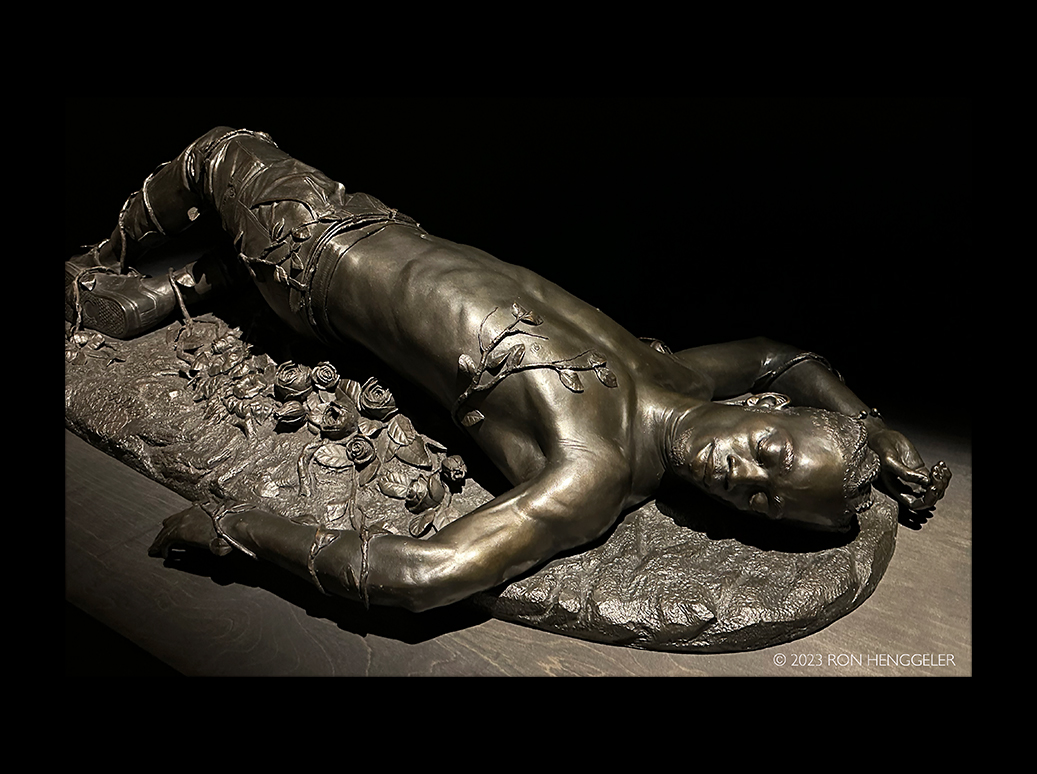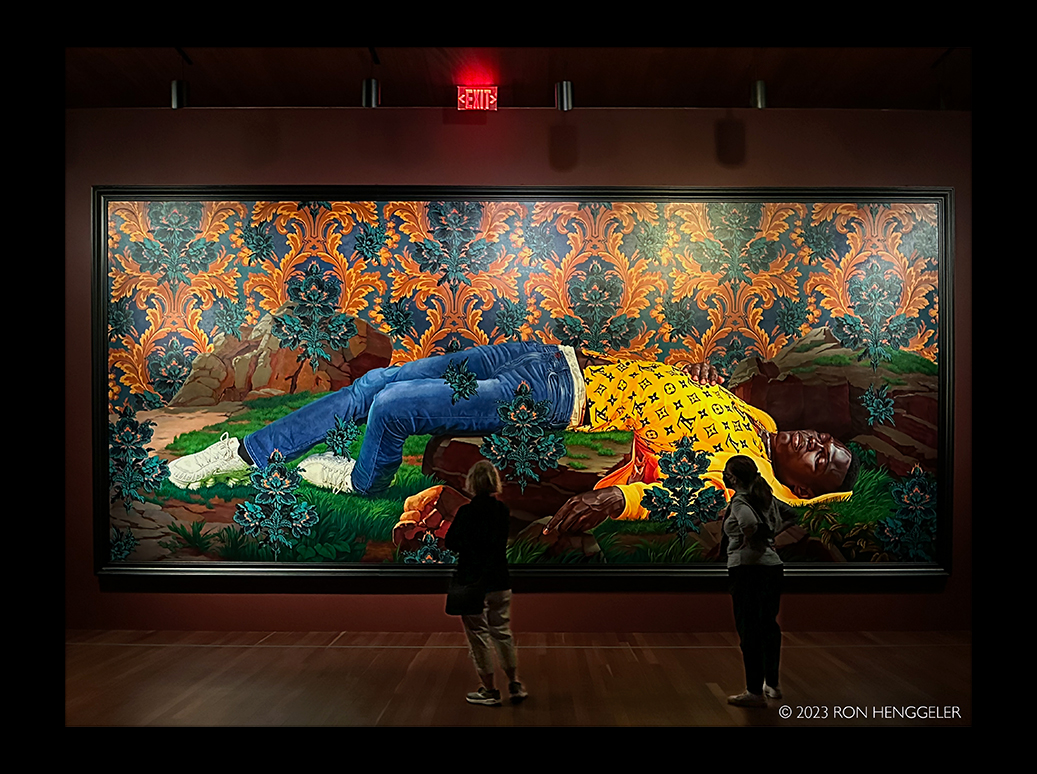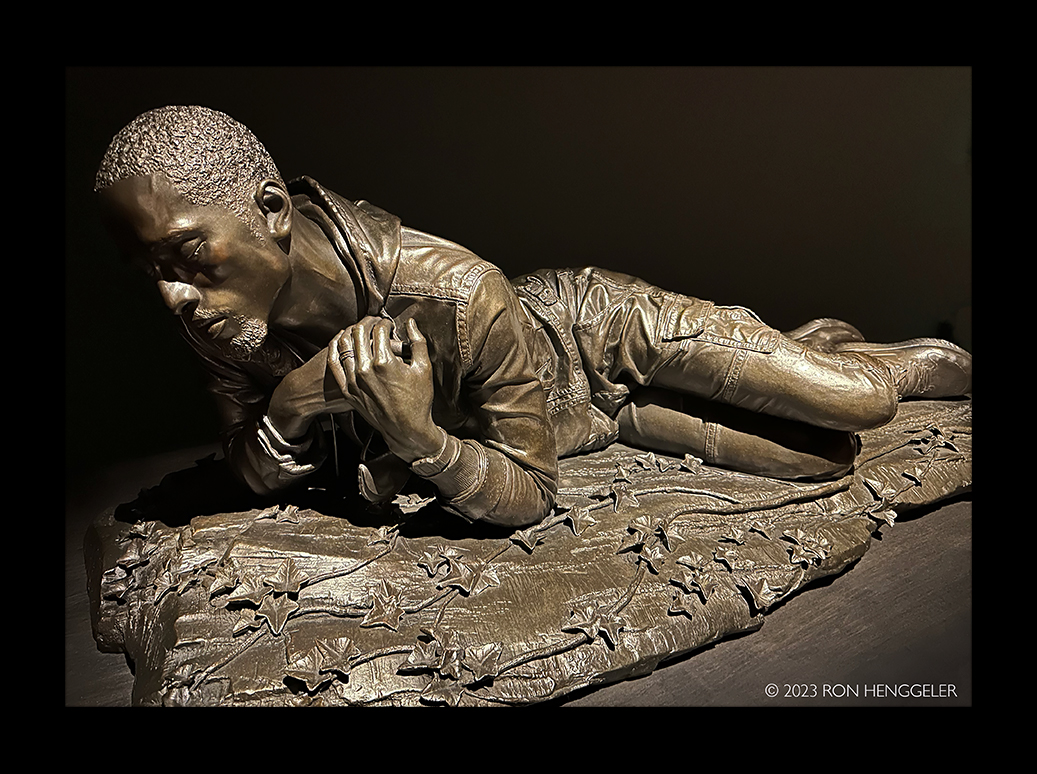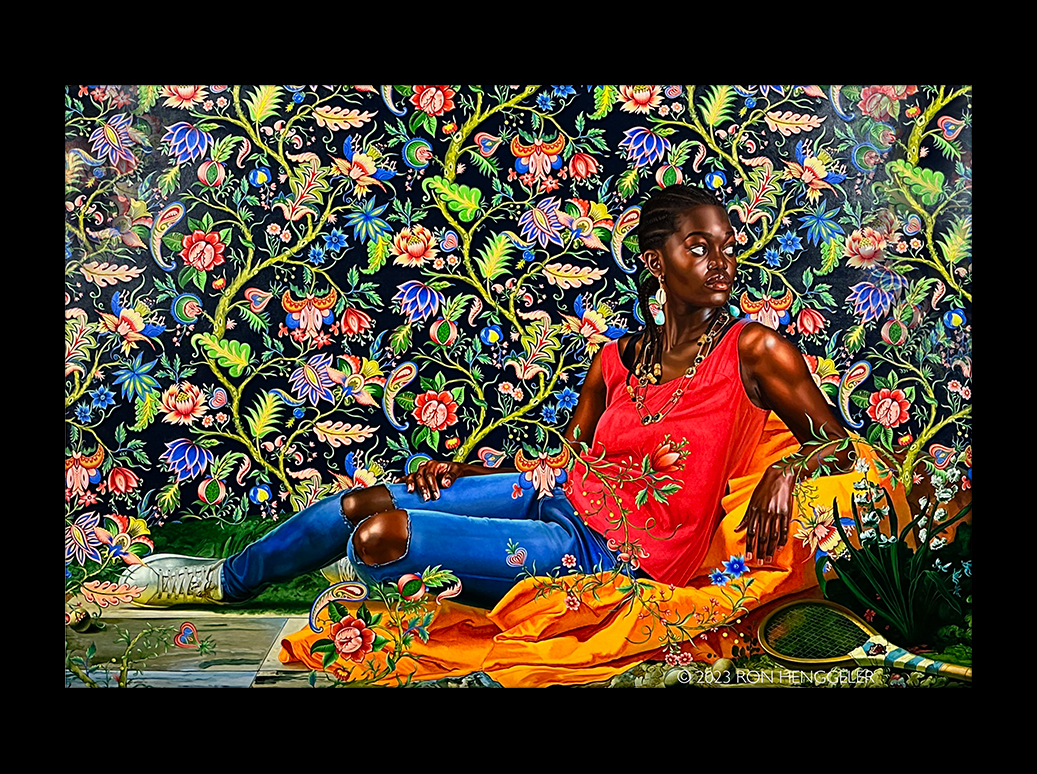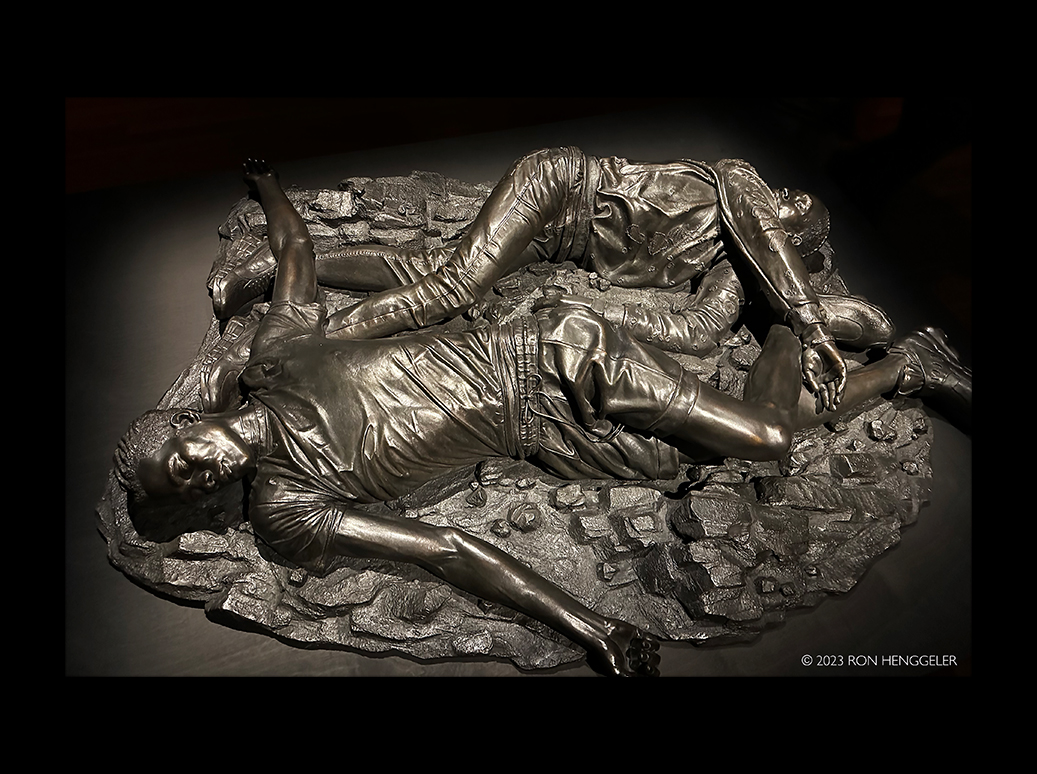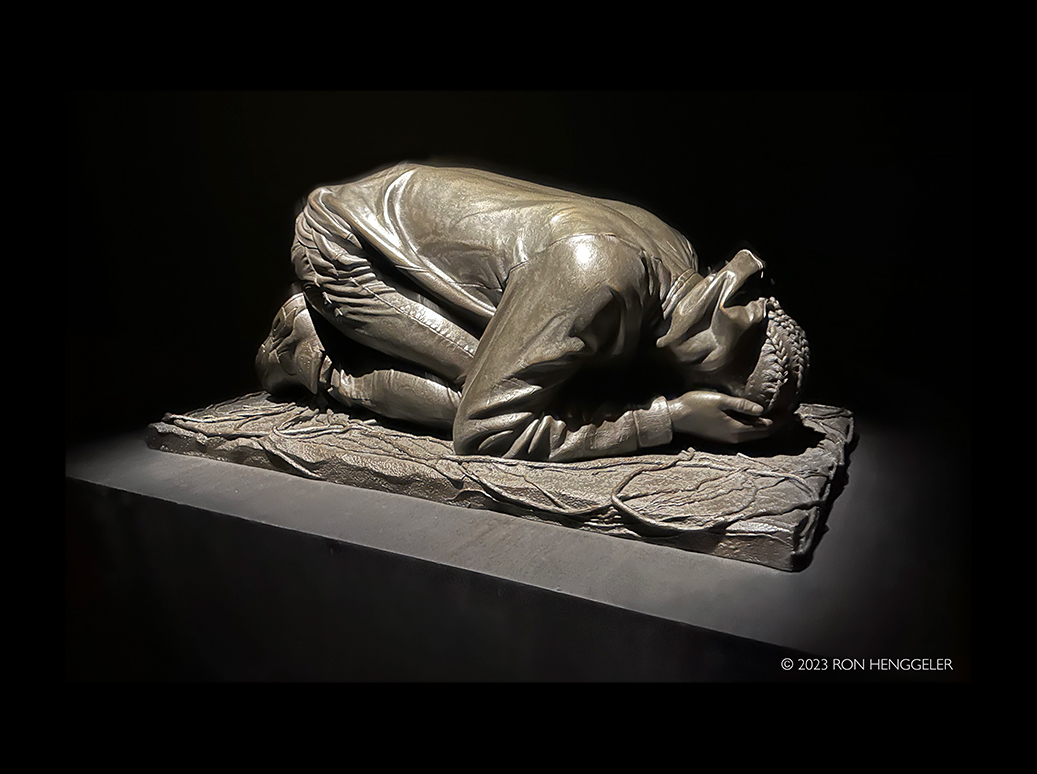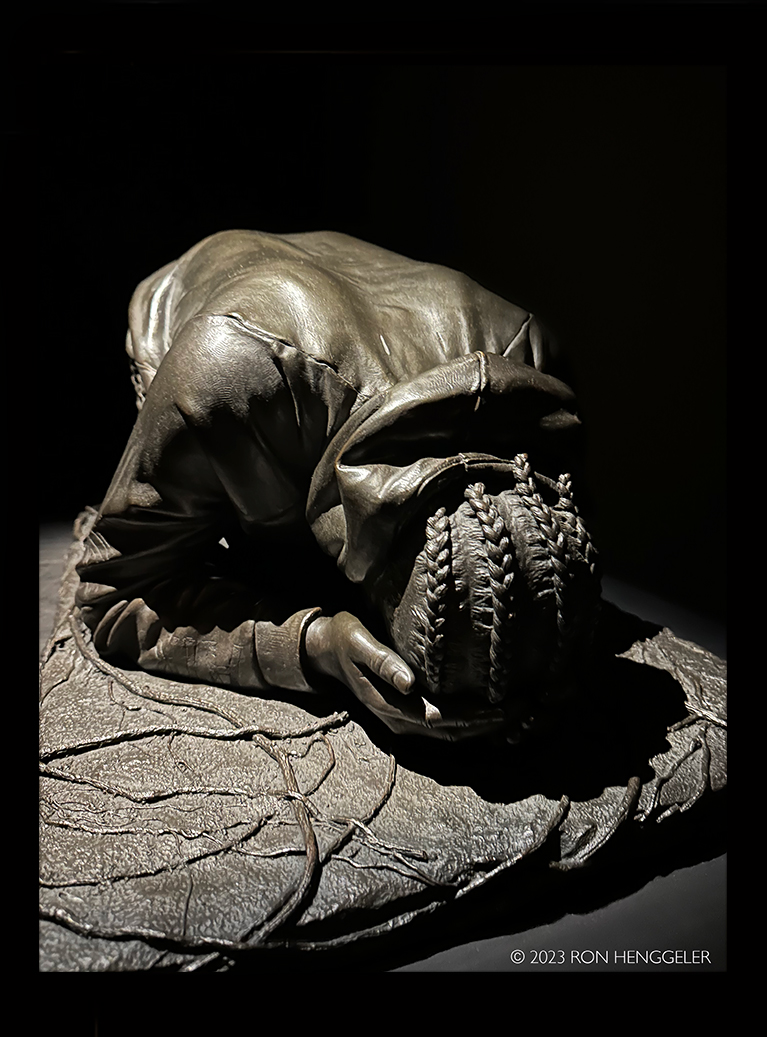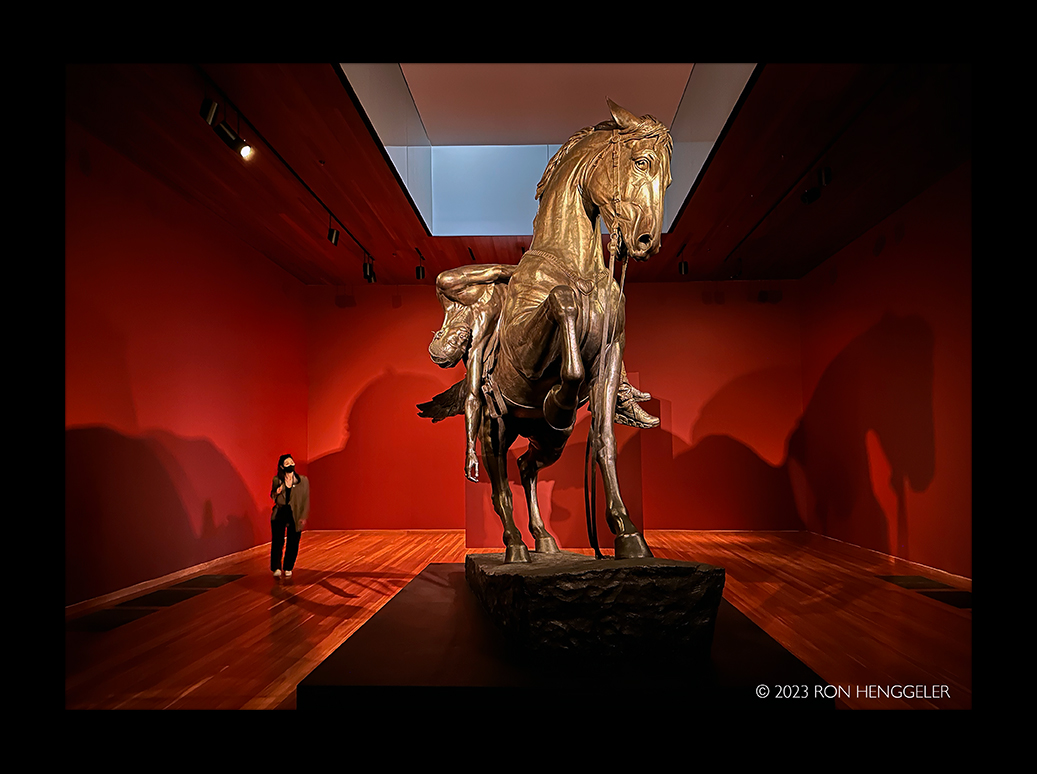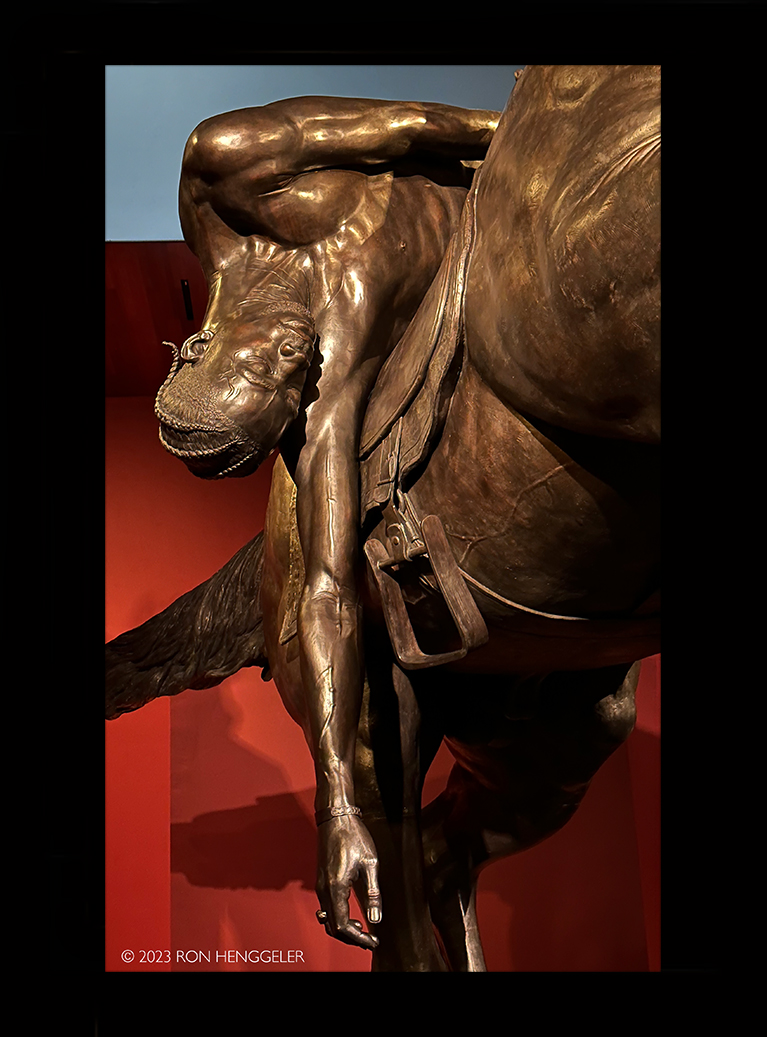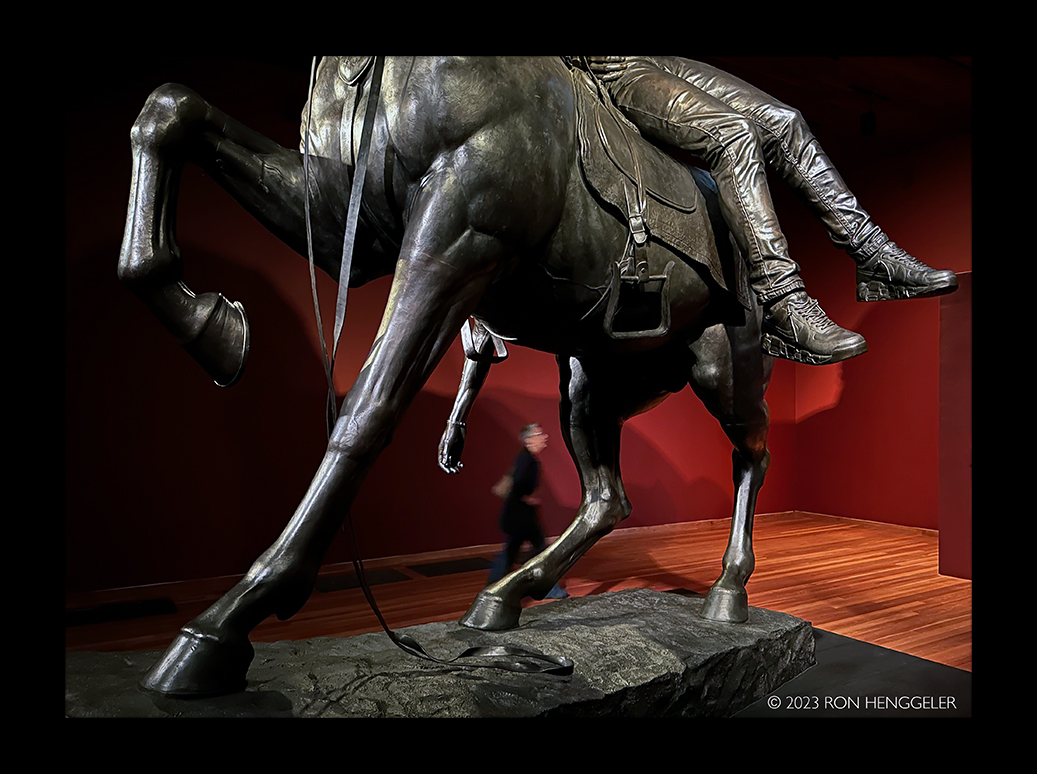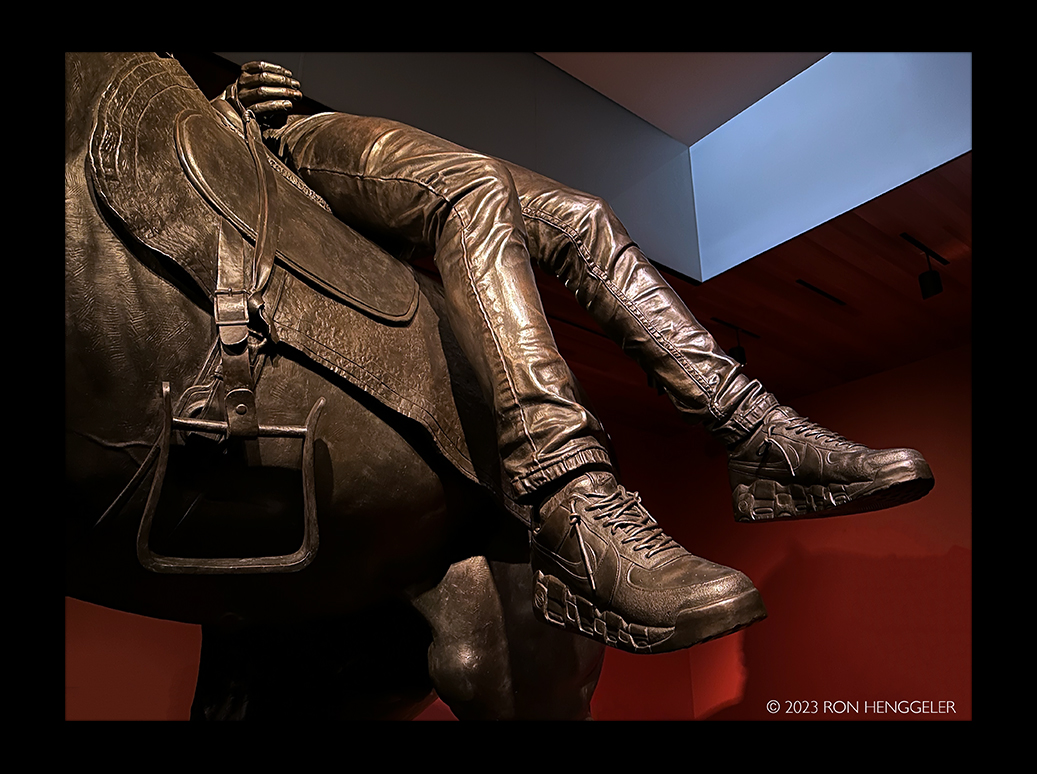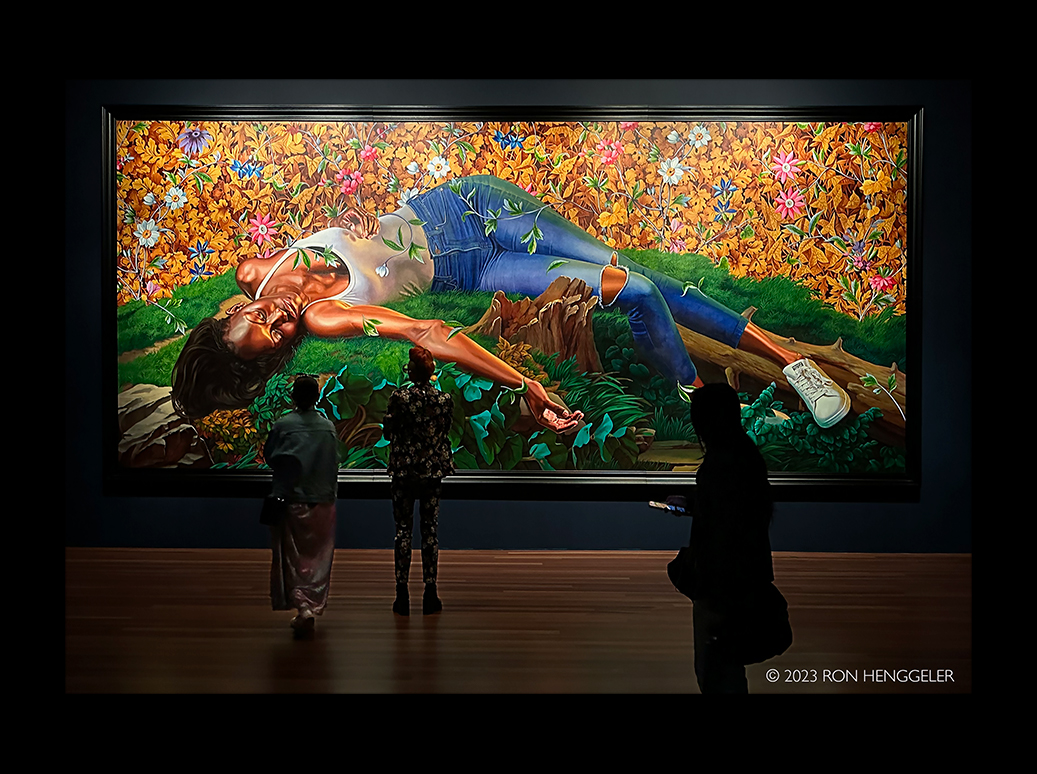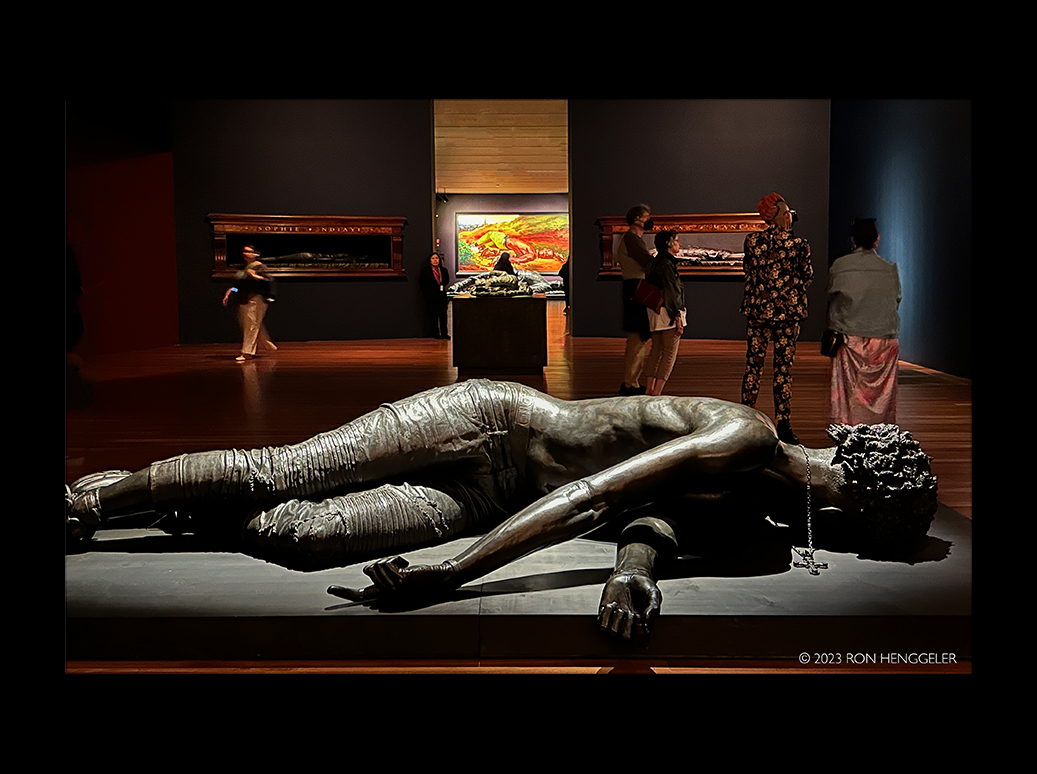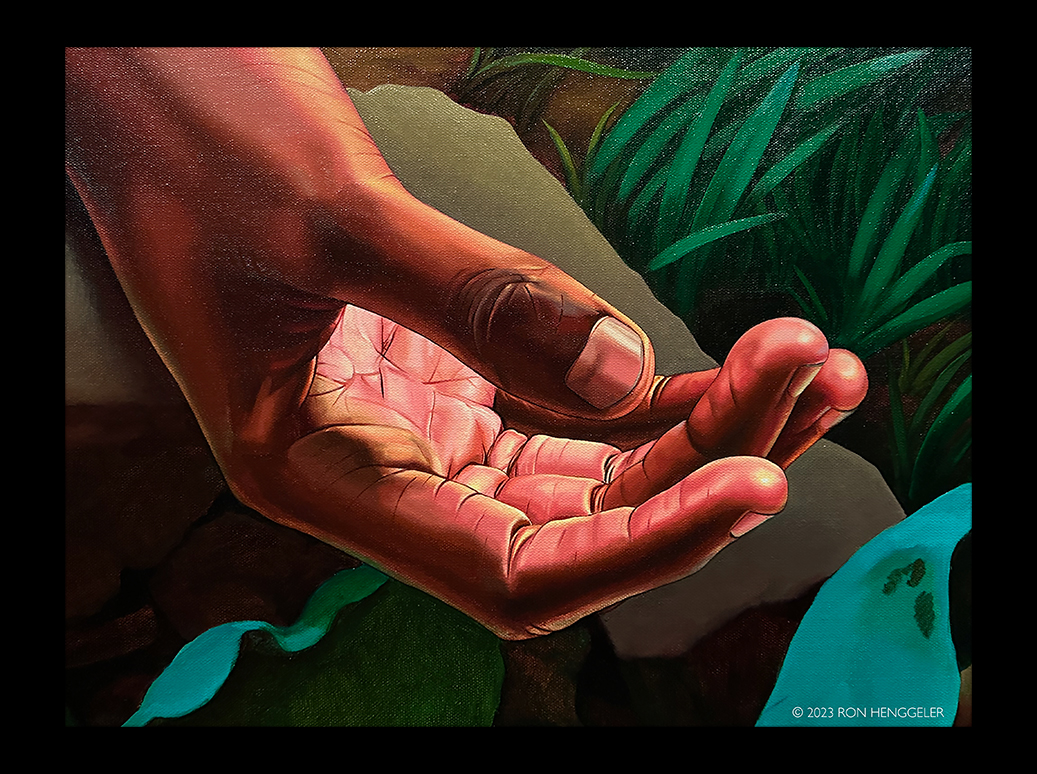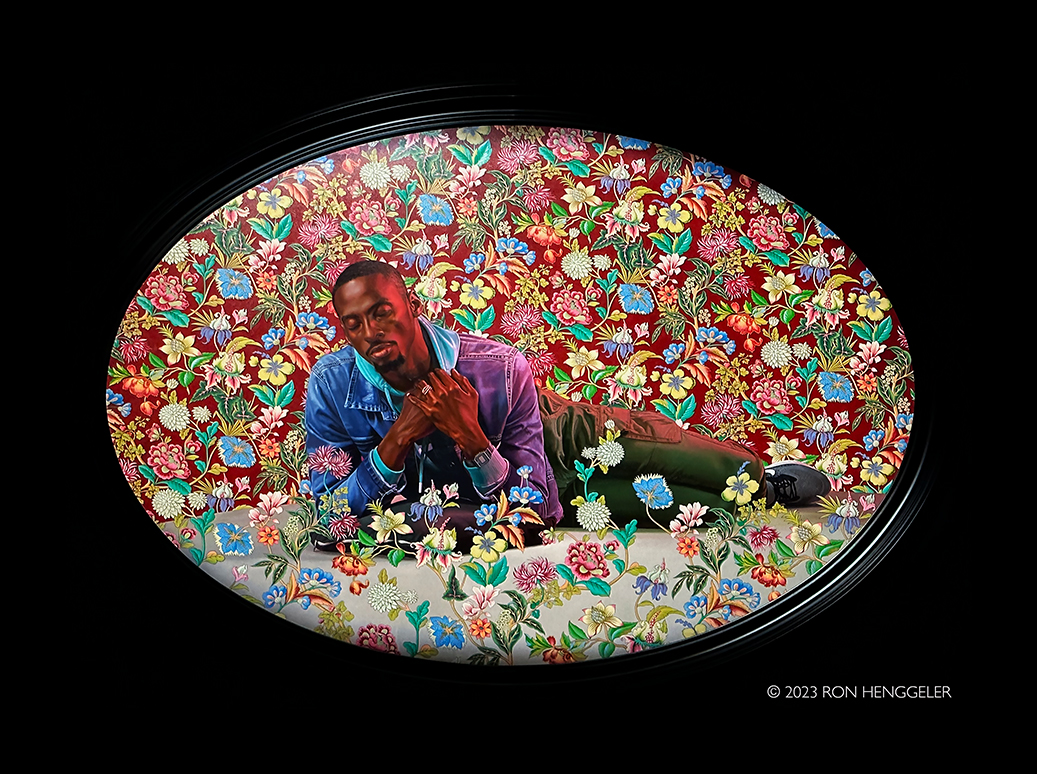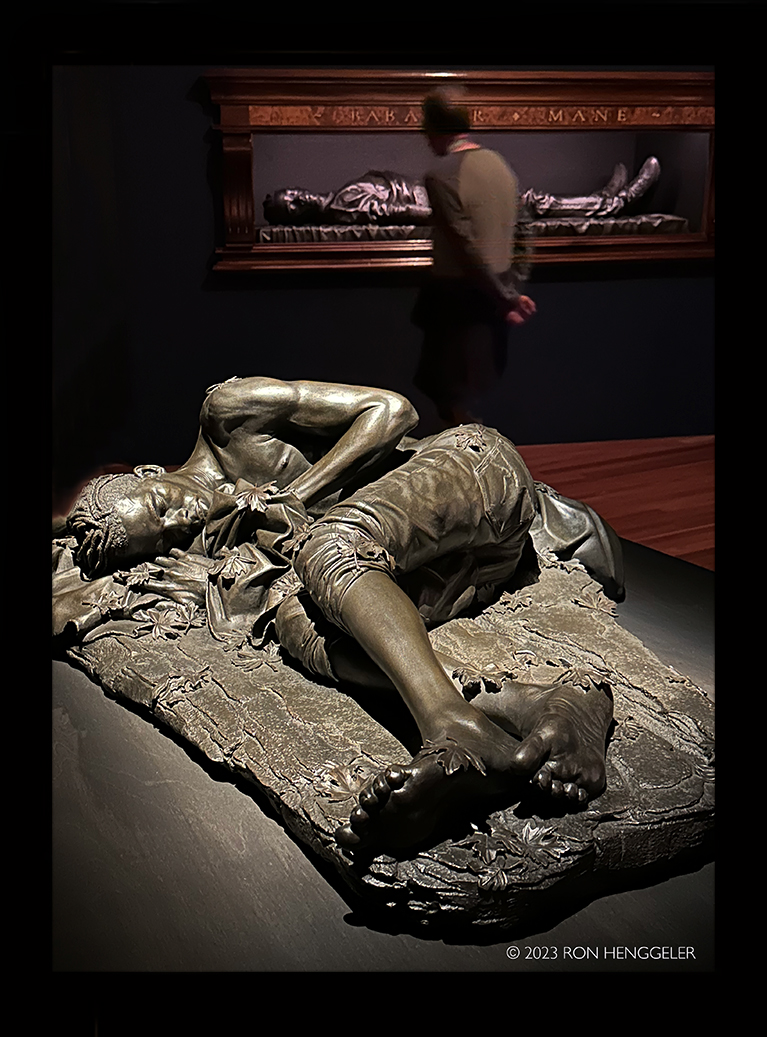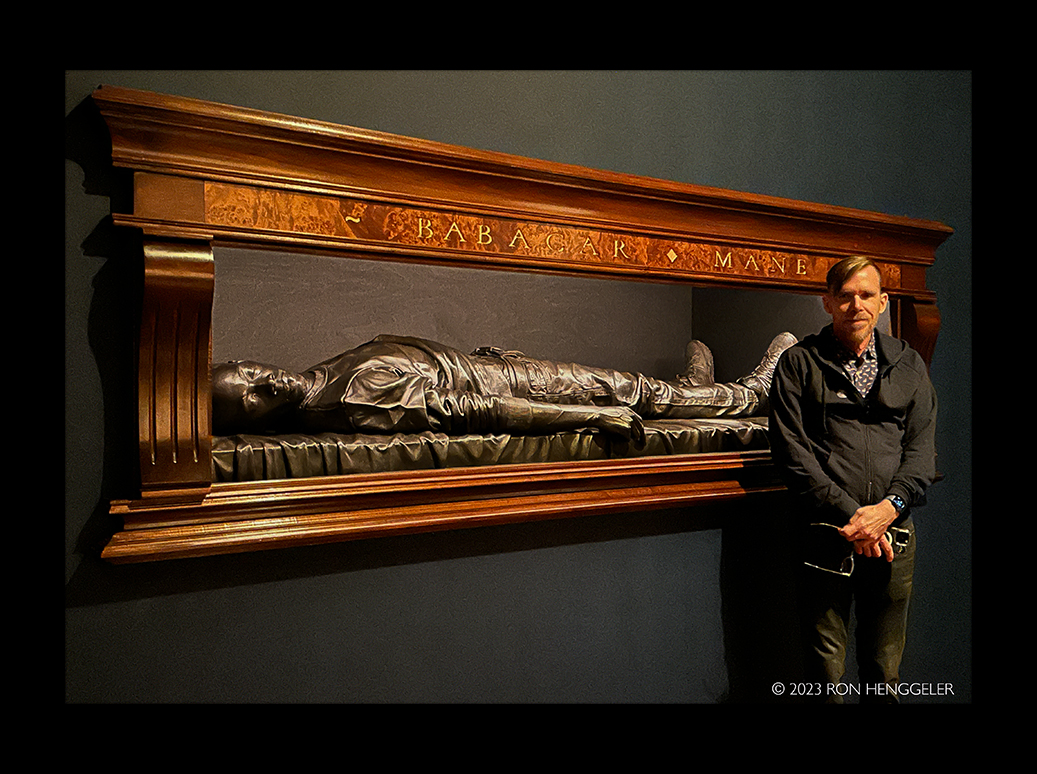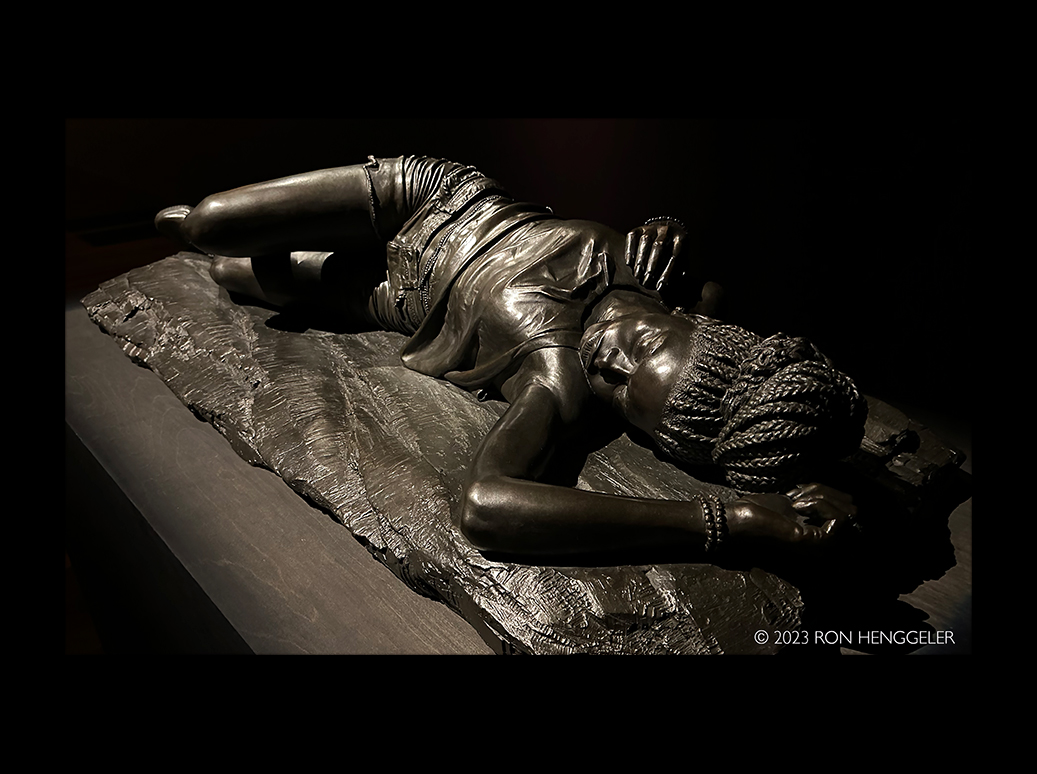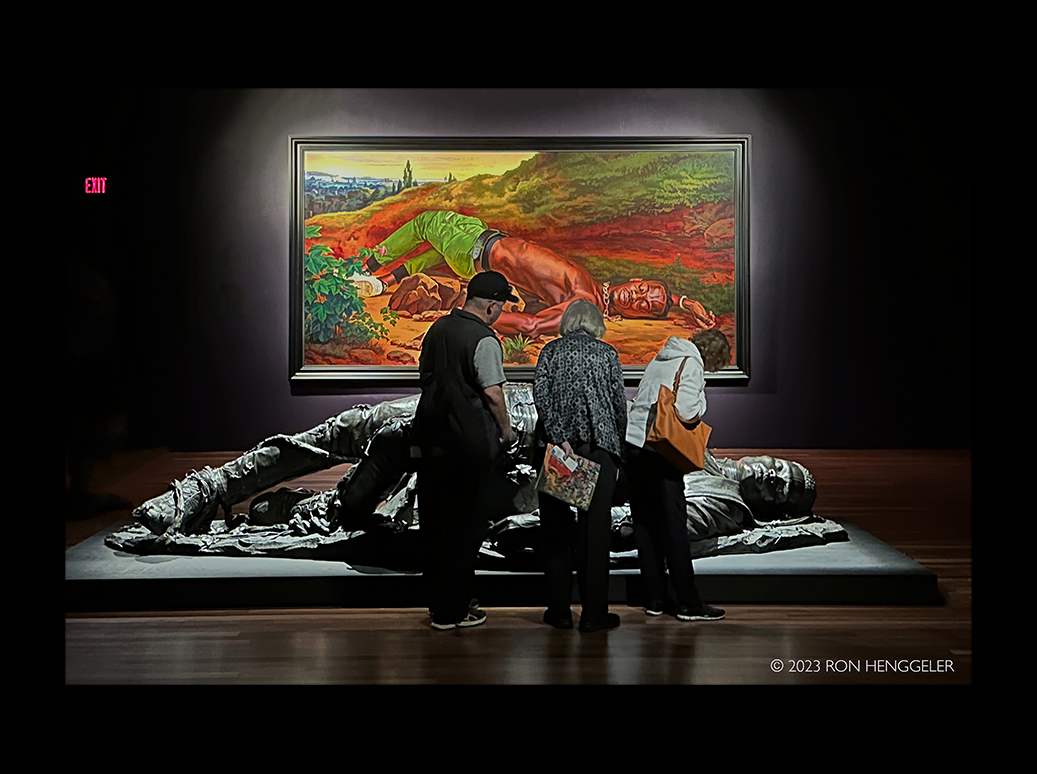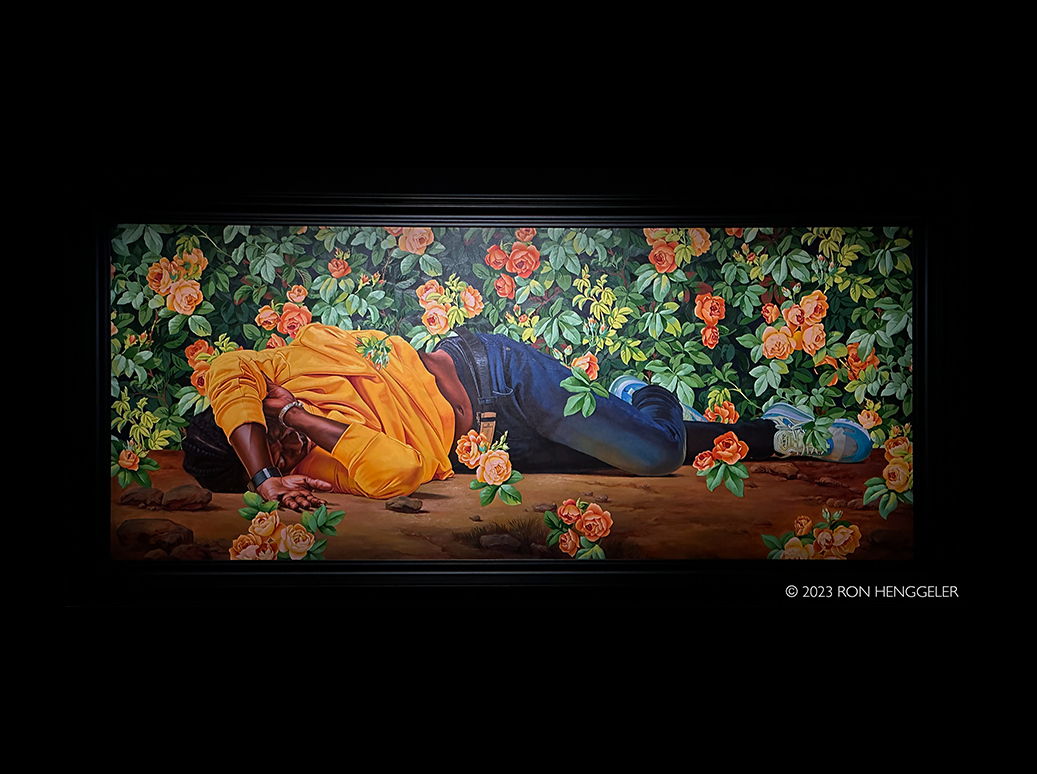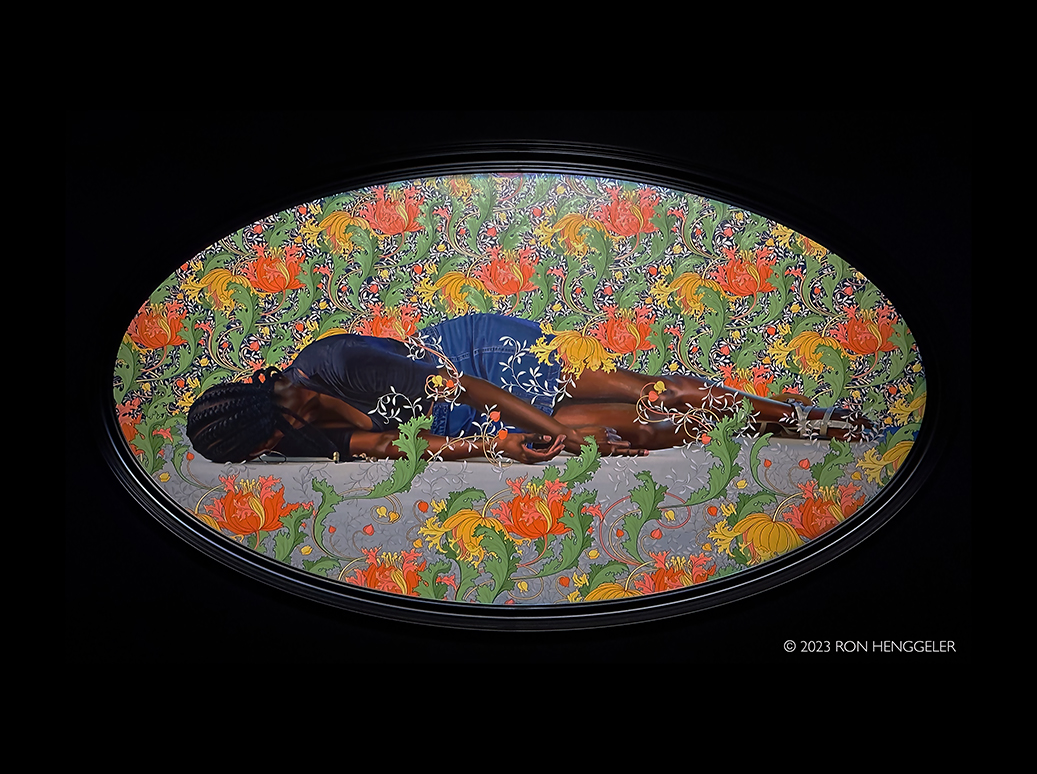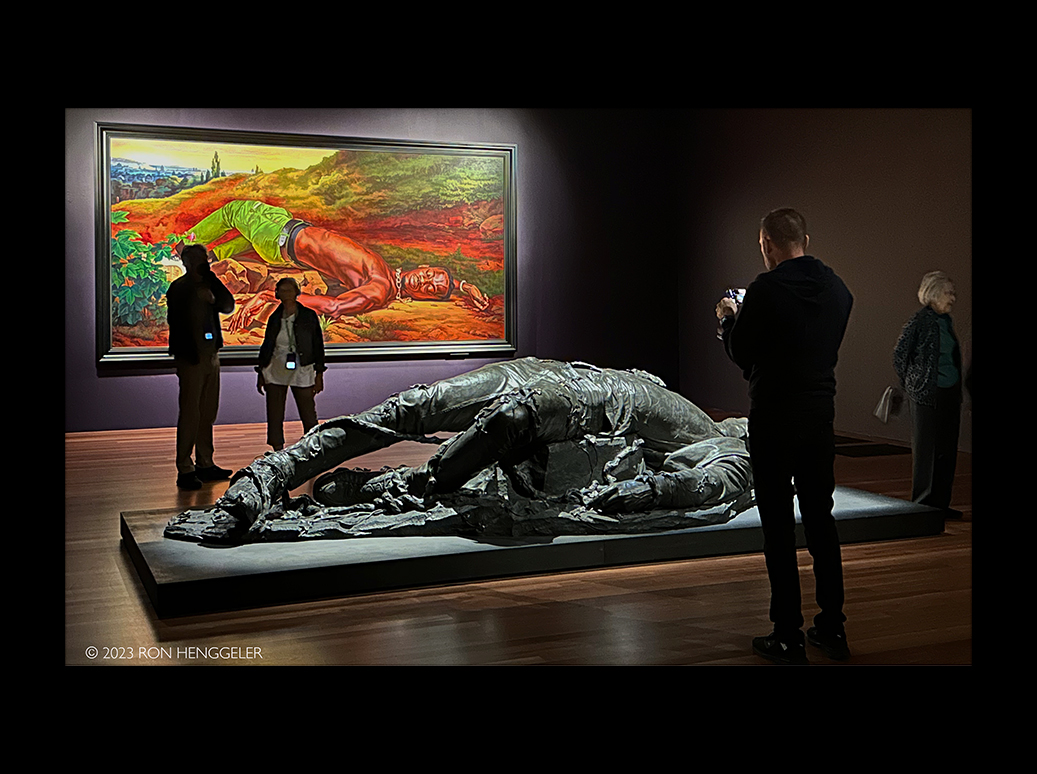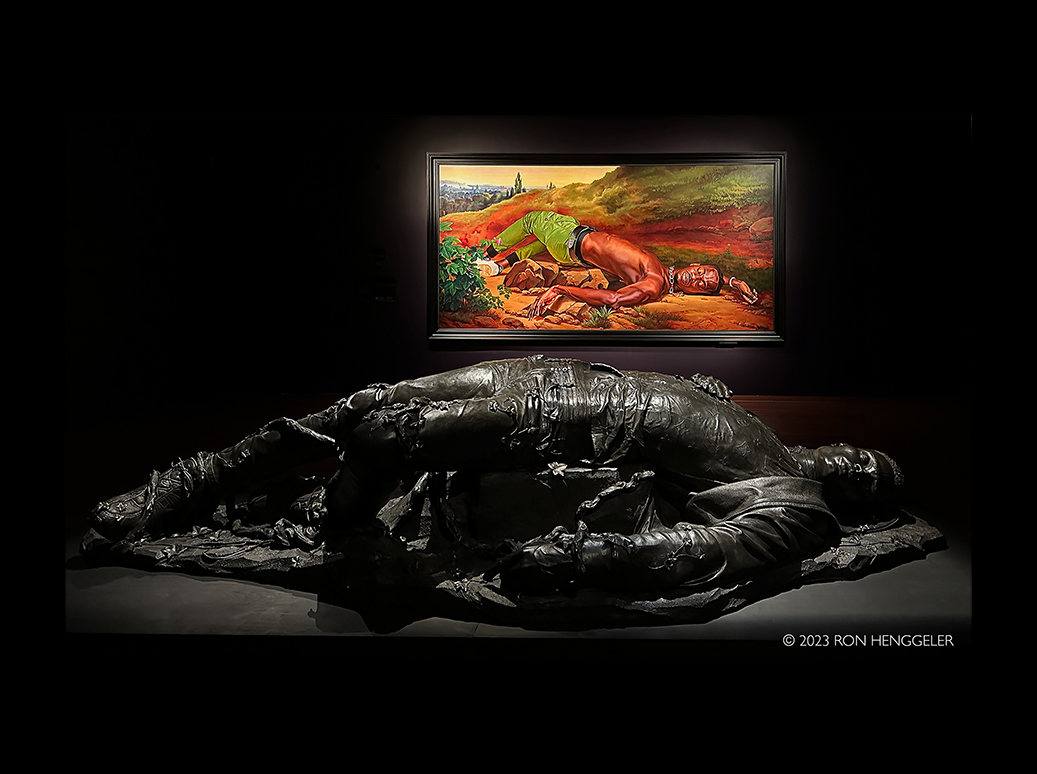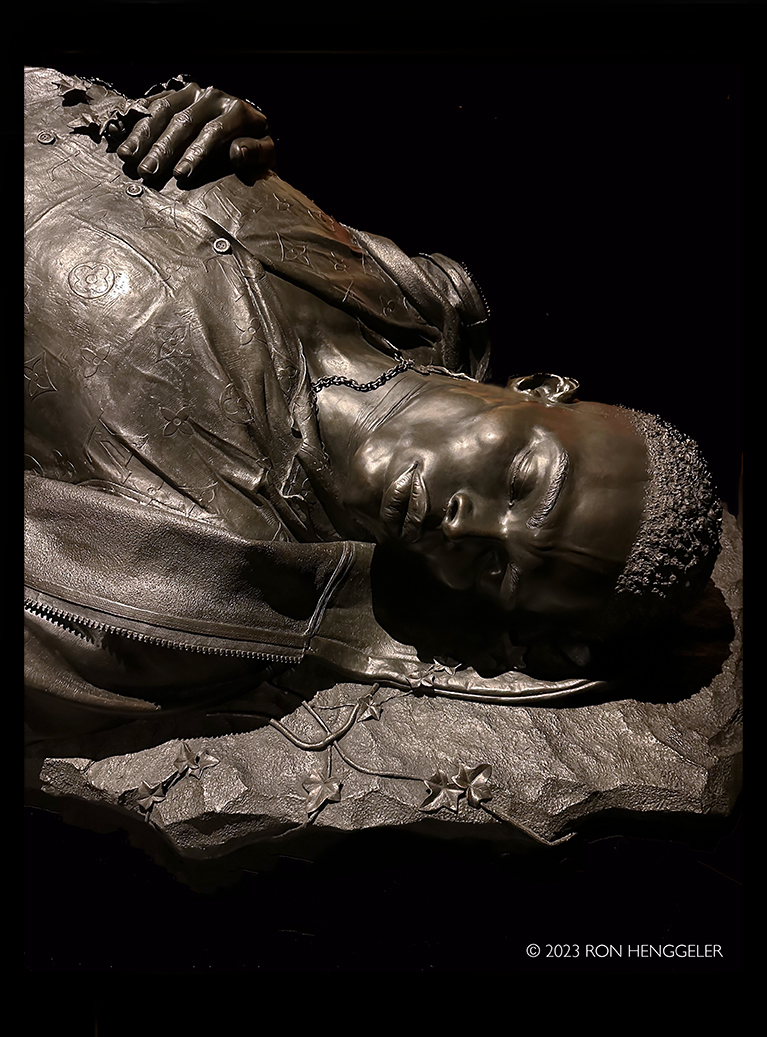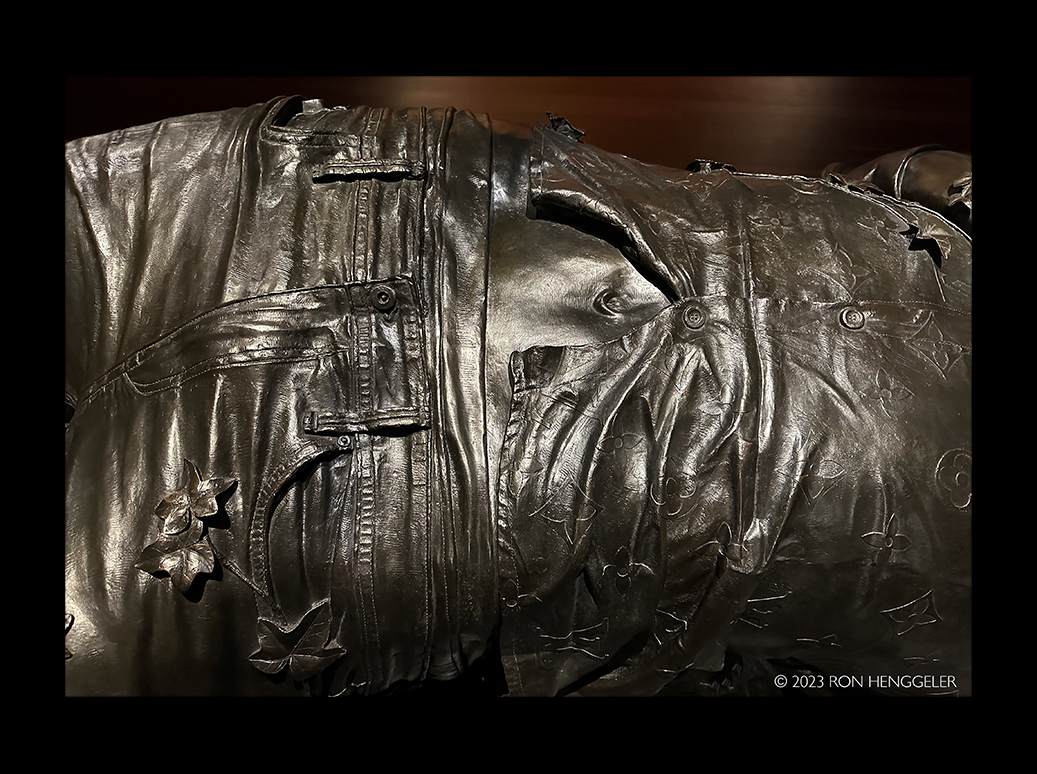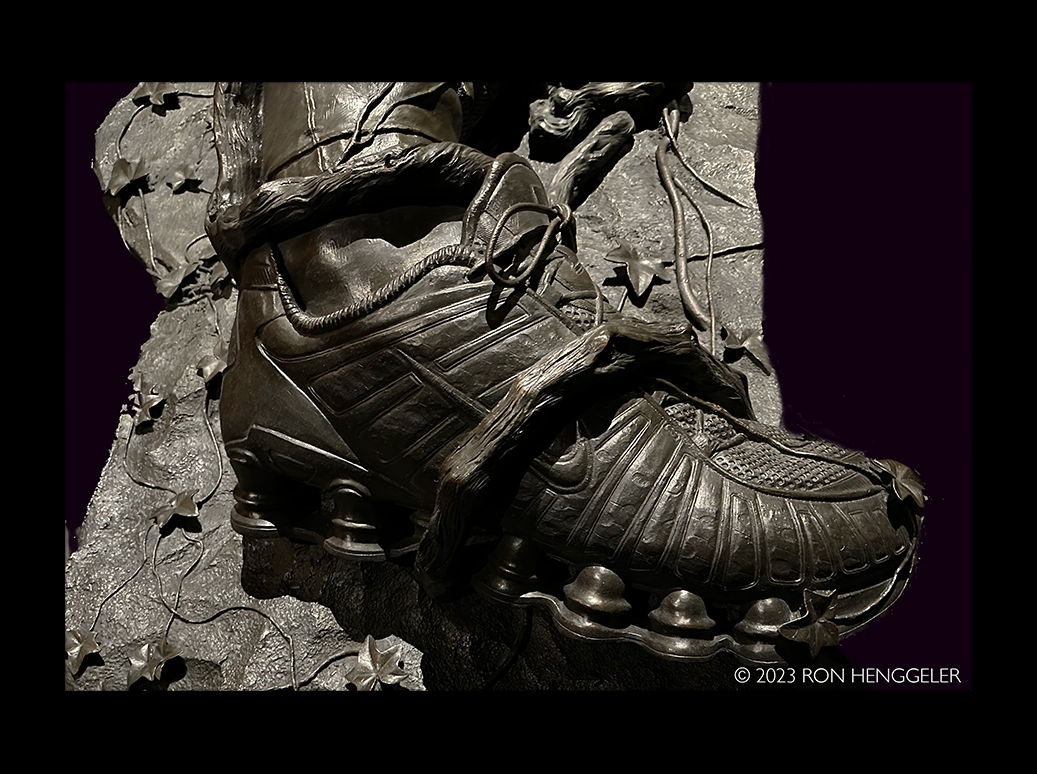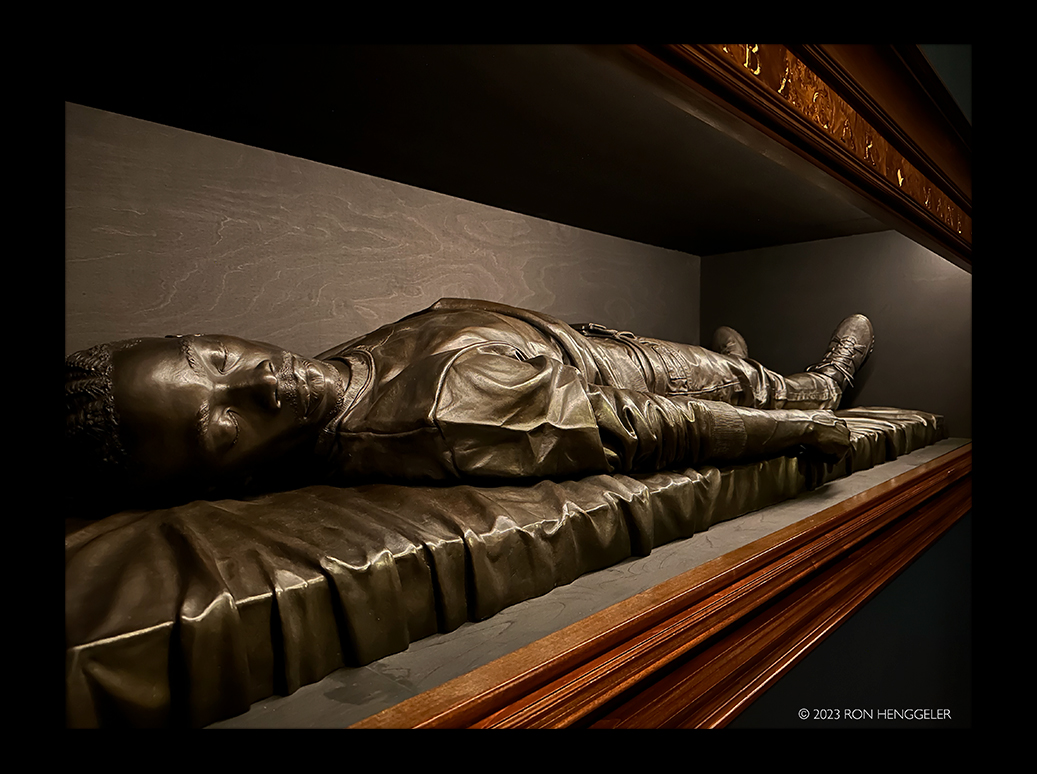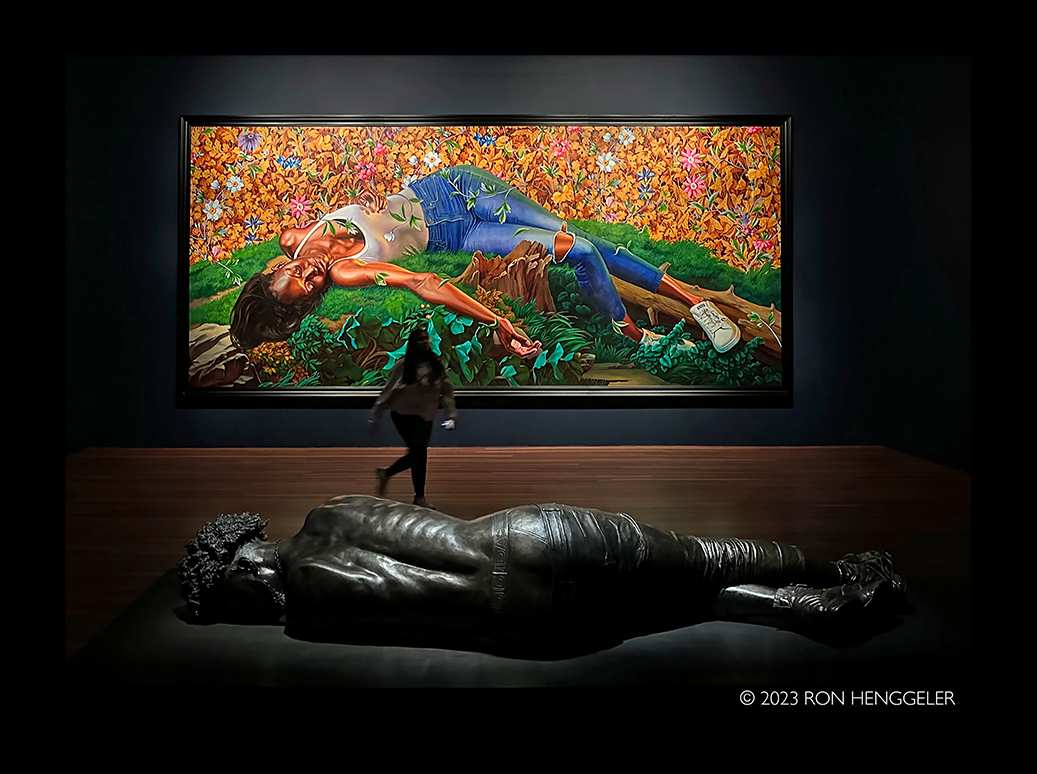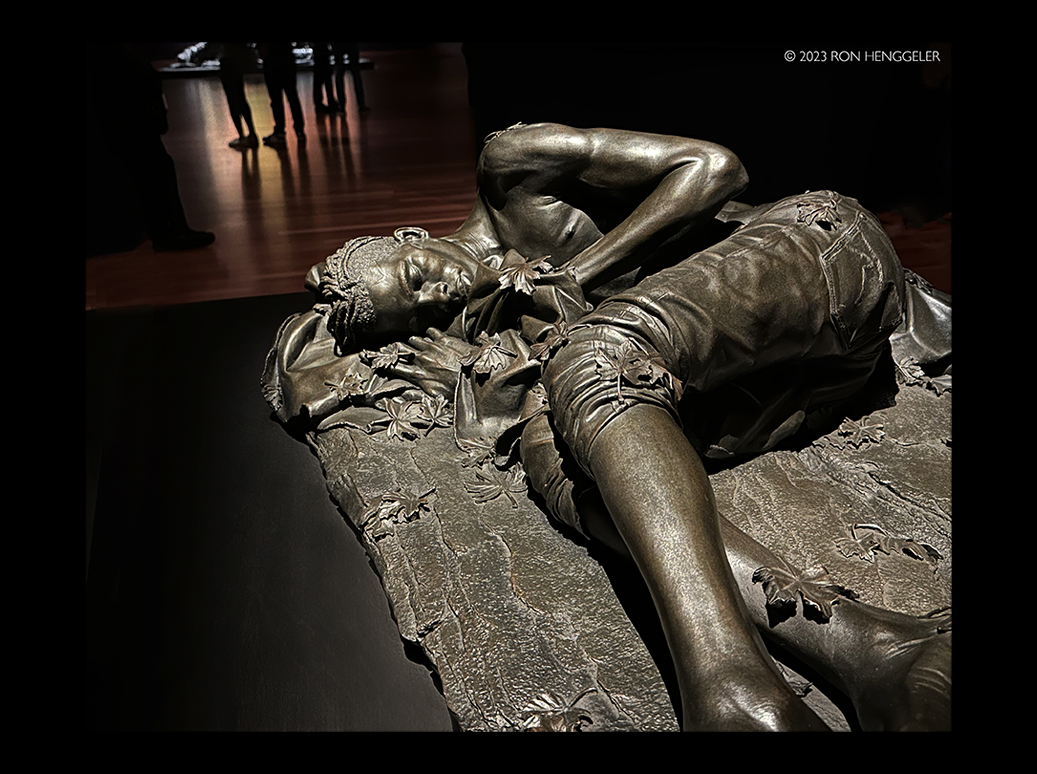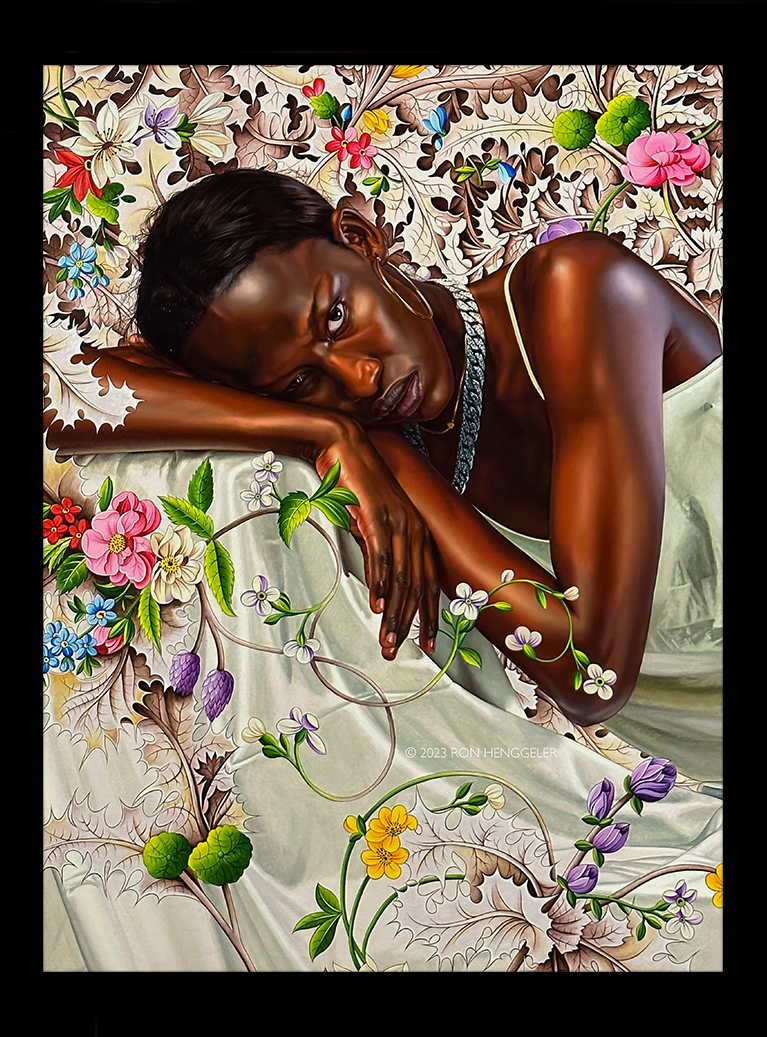RON HENGGELER |
May 2, 2023 |
||
at the De Young Museum |
||
American artist Kehinde Wiley’s new body of paintings and sculptures confronts the silence surrounding systemic violence against Black people through the visual language of the fallen figure. It expands on his 2008 series, Down — a group of large-scale portraits of young Black men inspired by Hans Holbein the Younger’s The Dead Christ in the Tomb (1521–1522). Wiley investigates the iconography of death and sacrifice in Western art, tracing it across religious, mythological, and historical subjects. In An Archaeology of Silence, the senseless deaths of men and women around the world are transformed into a powerful elegy of resistance. The resulting paintings of figures struck down, wounded, or dead, referencing iconic paintings of mythical heroes, martyrs, and saints, offer a haunting meditation on the legacies of colonialism and systemic racism. From: famsf.org |
||
|
||
Kehinde Wiley (b. 1977, Los Angeles) has dedicated his artistic career to uplifting the beauty and power of Black people, in particular young Black men, who often function in his work as stand-ins for himself. Over the past twenty years, he has received wide acclaim for projecting his subjects into positions of authority and grace by painting-and more recently sculpting -them in compositions inspired by famous Western portraits. Wiley's figures often triumphantly occupy cultural spaces traditionally reserved for white royalty, clergy, or nobility, as he interrogates his subjects" exclusion from such historical representations. At the same time, such works offer an acerbic commentary on the codified and commodified attributes of Black masculinity in Western society that demand the repression of any type of human vulnerability. |
||
|
||
Sleep, 2022 |
||
|
||
Morpheus, 2021 |
||
|
||
Dying Gaul, after a Roman Sculpture of the 1st Century, 2021 |
||
|
||
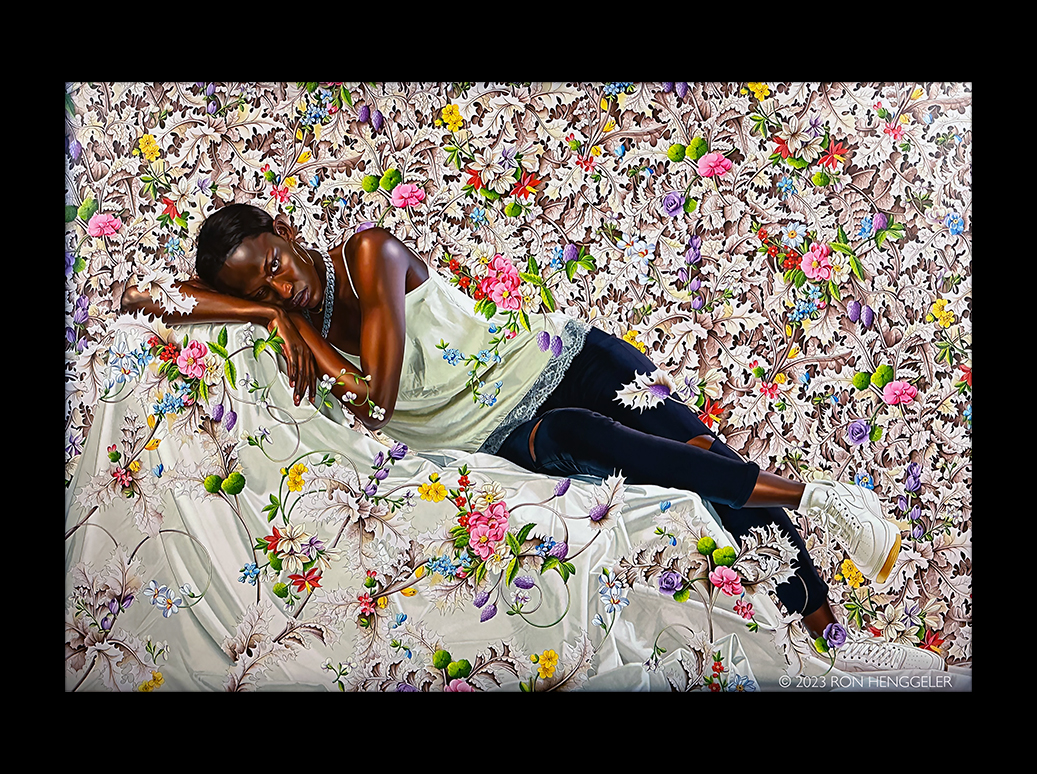 |
||
Morpheus |
||
|
||
|
||
Femme Piquée par un Serpent(Mamadou Gueye)2022Oil on canvas |
||
|
||
Christian Martyr Tarcisius(El Hadji Malick Gueye)2021Bronze |
||
|
||
The Death of Hyacinth (Ndey Buri Mboup)2022Oil on canvas |
||
|
||
Death of Two Soldiers2021Bronze |
||
|
||
Youth Mourning2021Bronze |
||
|
||
Detail of: Youth Mourning2021Bronze |
||
|
||
An Archaeology of Silence, 2021
|
||
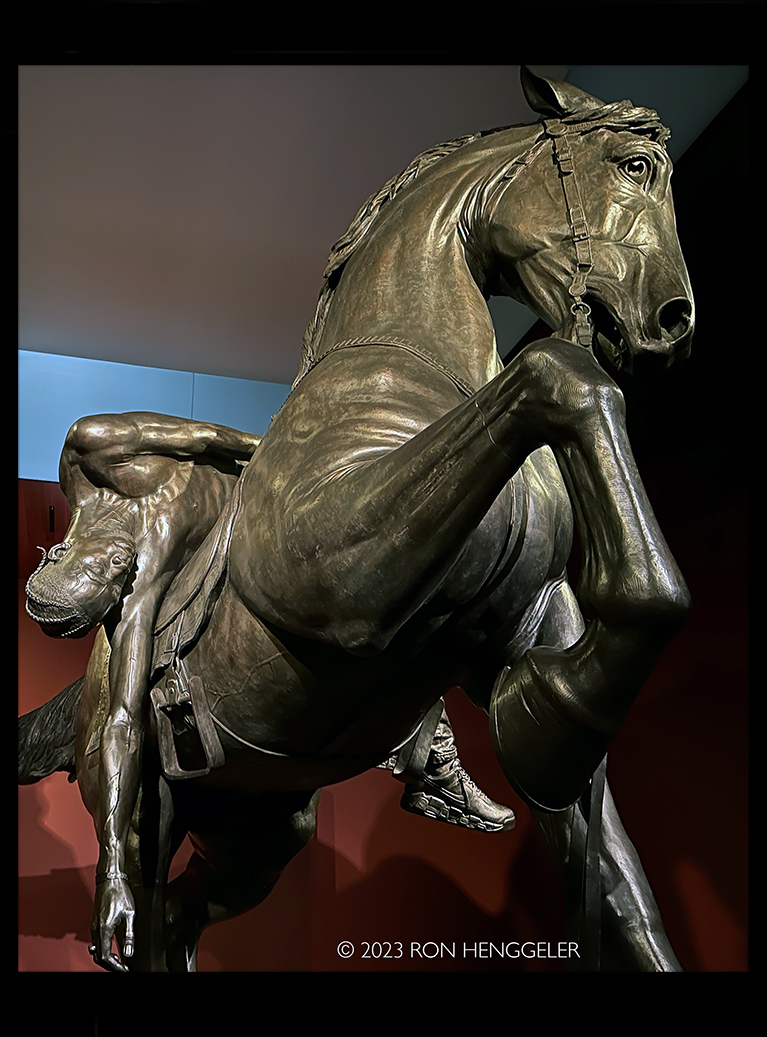 |
||
Detail of: An Archaeology of Silence2021 |
||
|
||
Detail of: An Archaeology of Silence2021 |
||
|
||
Detail of: An Archaeology of Silence2021 |
||
|
||
Detail of: An Archaeology of Silence2021 |
||
|
||
|
||
Ariadne Asleep on the Island of Naxos2022Bronze |
||
|
||
|
||
|
||
THE |
||
|
||
The Body of the Dead Christ in the Tomb(Babacar Mane)2021Bronze and wooden frame with gold letters |
||
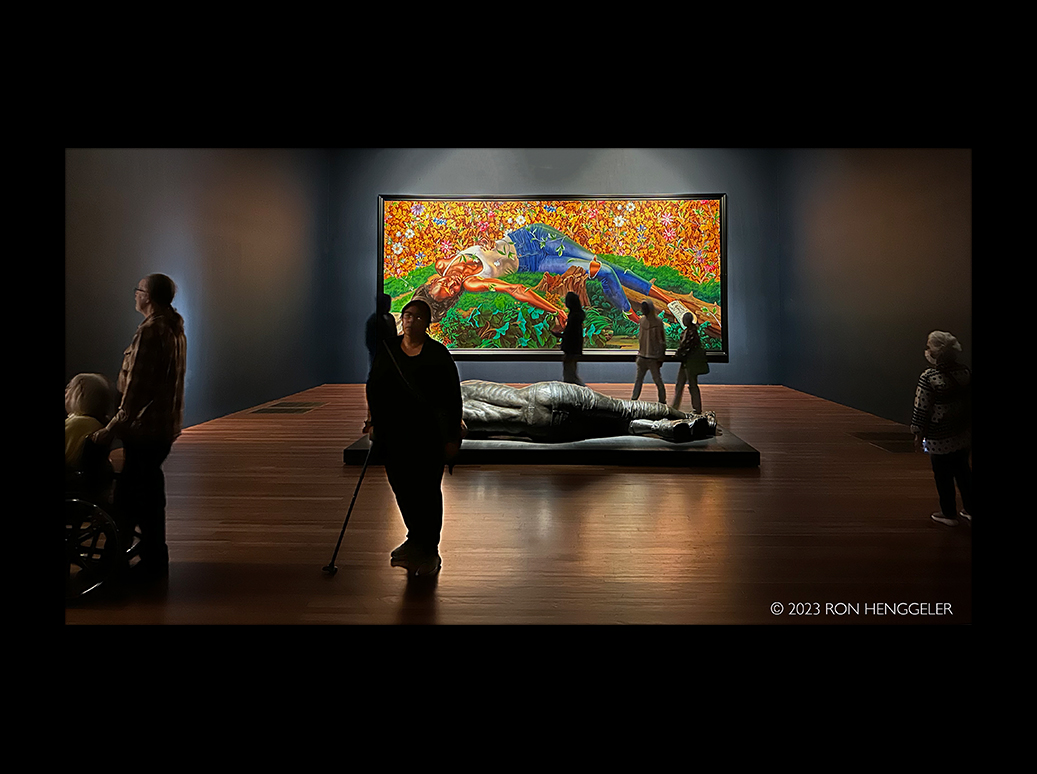 |
||
|
||
Entombment after Titian, 15592021Bronze |
||
|
||
THE |
||
|
||
Reclining Nude (Babacar Mané), 2022 |
||
|
||
|
||
Young Tarentine (Mamadou Gueye)2021Bronze |
||
|
||
Young Tarentine (Mamadou Gueye)2021Bronze |
||
|
||
Detail of: Young Tarentine (Mamadou Gueye)2021Bronze |
||
|
||
Detail of: Young Tarentine (Mamadou Gueye)2021Bronze |
||
|
||
Detail of: Young Tarentine (Mamadou Gueye)2021Bronze |
||
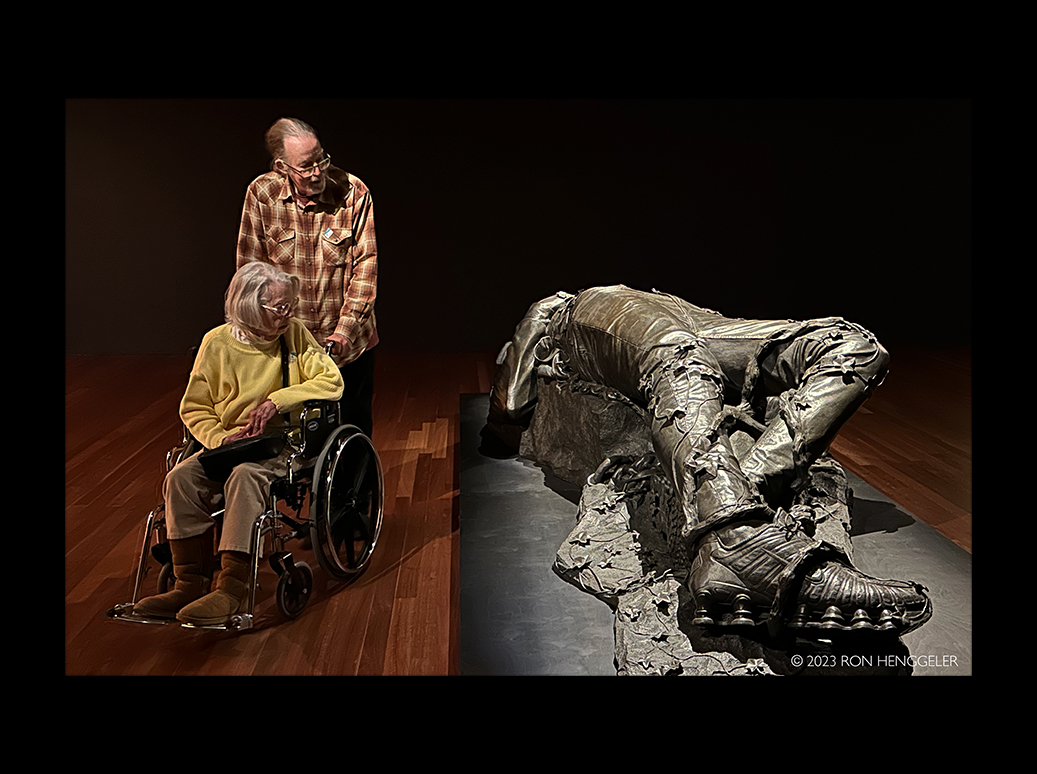 |
||
Young Tarentine (Mamadou Gueye)2021Bronze |
||
|
||
The Body of the Dead Christ in the Tomb(Babacar Mane)2021Bronze and wooden frame with gold letters |
||
|
||
Ariadne Asleep on the Island of Naxos2022Bronze |
||
|
||
Ariadne Asleep on the Island of Naxos2022Bronze |
||
|
||
Detail of: Morpheus (Ndeye Fatou Mbaye)2022Oil on canvas
Kehinde Wiley - Creating Art That’s Familiar in an Unfamiliar Way | The Daily ShowKehinde Wiley creates paradigm shift in the art world"Kehinde Wiley: A New Republic" video seriesArtist Talk: Kehinde Wiley
|
||
Newsletters Index: 2023, 2022, 2021 2020, 2019, 2018, 2017, 2016, 2015, 2014, 2013, 2012, 2011, 2010, 2009, 2008, 2007, 2006
Photography Index | Graphics Index | History Index
Home | Gallery | About Me | Links | Contact
© 2023 All rights reserved
The images oon this site are not in the public domain. They are the sole property of the
artist and may not be reproduced on the Internet, sold, altered, enhanced,
modified by artificial, digital or computer imaging or in any other form
without the express written permission of the artist. Non-watermarked copies of photographs on this site can be purchased by contacting Ron.
